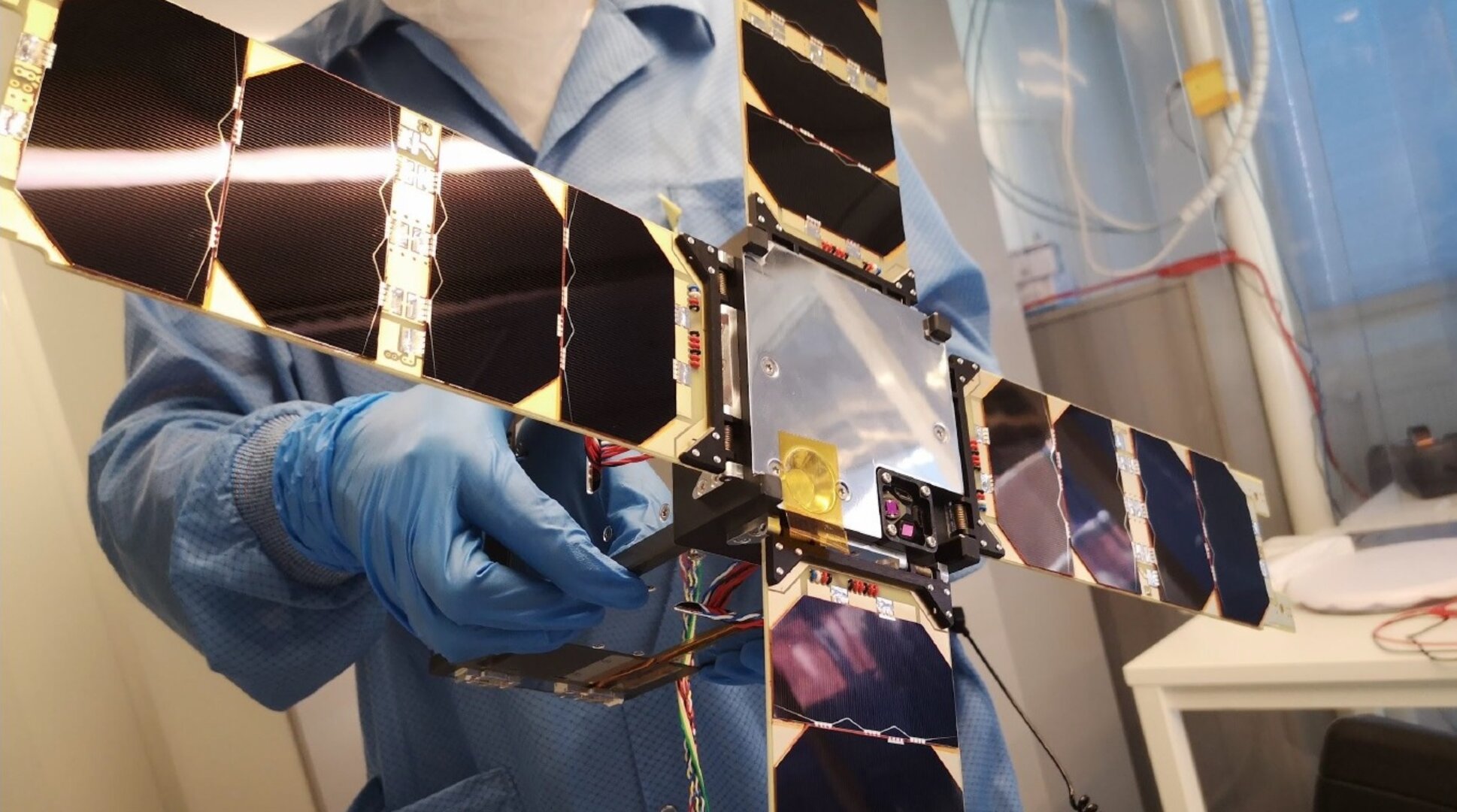NOAA adopts Finland’s CubeSat-proven space weather monitor
17/11/2022
62 views
1 likes
An advanced X-ray monitoring instrument tested for space aboard an ESA CubeSat will serve as an operational space weather payload on the US National Oceanic and Atmospheric Administration‘s Space Weather Next Lagrange 1 Series satellite, currently planned for launch in 2028, which will operate 1.5 million km from Earth, keeping watch for eruptions from our Sun.
Made in Finland, the X-ray Flux Monitor was launched aboard the Sunstorm CubeSat – about the size of a big, thick, paperback book – by Europe’s Vega rocket in August last year.
This stripped-down version of the full-scale XFM instrument, formally known as XFM-CS, has since amassed more than a year’s worth of data, observing hundreds of X-ray flares, dozens of them being associated with the occurrence of coronal mass ejections (CMEs). CMEs are huge explosions involving ejections of up to a billion tons of coronal plasma from the Sun at a time, which intensify the solar wind and are leading drivers of space weather.
“Solar X-ray monitoring in space has been carried out for a long time, but the instruments are wideband flux monitors, measuring the overall intensity of X-ray flares,” explains the inventor of the XFM concept, Juhani Huovelin of Finland’s Isaware company.
“Our XFM design is different because it also breaks down the flare into an energy spectrum, yielding valuable information on the still unexplained important questions about the connection between solar flares and CMEs. Our experience on Sunstorm shows it can measure accurately the spectra of very strong flares, but it is also sensitive enough to detect the X-ray spectrum of an almost quiescent Sun.”
CubeSats are nano-satellites with designs based on standardised 10 cm cubic elements. ESA makes use of them to provide early flight-testing for innovative European technology, through the Fly element of its General Support Technology Programme (GSTP).
“Sunstorm shows the value of in-orbit demonstration,” comments Camille Pirat of ESA’s CubeSat Systems Unit. “Its flight experience proved that XFM is able to operate in space and able to meet its stated performance specifications, helping the full-sized version of the instrument to obtain a berth with NOAA, while at the same time producing quality scientific data.”
The full-scale version of XFM is around four times larger than XFM-CS, with redundant detectors and enlarged observing apertures. Juhani adds: “This instrument needs to meet the operational performance requirements, meaning it has to keep on delivering data on a second-by-second basis. XFM-CS is in low-Earth orbit at 550 km altitude, and for almost half its orbit it loses sight of the Sun, but the NOAA Space Weather satellite will be positioned out at Lagrange Point 1 of the Sun-Earth system in deep space, with nothing to obscure XFM’s visibility of the Sun.
“XFM-CS is also safeguarded from space radiation by Earth’s magnetic field so we were able to use cheaper commercial off the shelf components. The full-size instrument needs parts that will work and maintain their performance in the harsh radiation environment of deep space.”
The XFM concept incorporates novel silicon drift detector technology that has evolved from the silicon-based technology applied for astrophysics research three decades ago by members of the same Finnish team. Earlier versions were flown on ESA’s Smart-1 mission to the Moon – being subject to the 2003 ‘Great Halloween Solar Storms’ during its journey into lunar orbit – and onboard the BepiColombo mission to Mercury, where the Finnish SIXS instrument will measure the solar X-rays and particles for calibration of X-rays emitted by the surface of the planet.
Sunstorm itself continues operations, notes Janne Kuhno of Kuva Space, Sunstorm’s manufacturer: “We put together the platform carrying the instrument quite quickly. It has to be Sun-pointing of course – and balancing that requirement with thermal management of such a small platform turned out a minor challenge – but Sunstorm has been working well, shown by the amount of scientific-level data it has been producing. Having demonstrated this capability, with the assistance of ESA’s GSTP, we hope to go on to contribute to next generation space weather monitoring, and build up a future Finnish space sector.”
XFM was developed by ISAWARE with Aboa Space Research Oy, Oxford Instruments Technologies and Talvioja Consulting.
XFM-CS and Sunstorm were funded by Business Finland and implemented via ESA’s GSTP. The follow-on XFM instrument intended to fly on the NOAA Space Weather Next Lagrange 1 Series is being procured through ESA’s Space Safety Programme.
ESA’s Council at Ministerial Level
On 22-23 November ESA Director General Josef Aschbacher presents his proposals for the future of ESA to Europe’s space ministers for approval, including the continuation of GSTP. Find out more here
For all the latest Technology News Click Here

